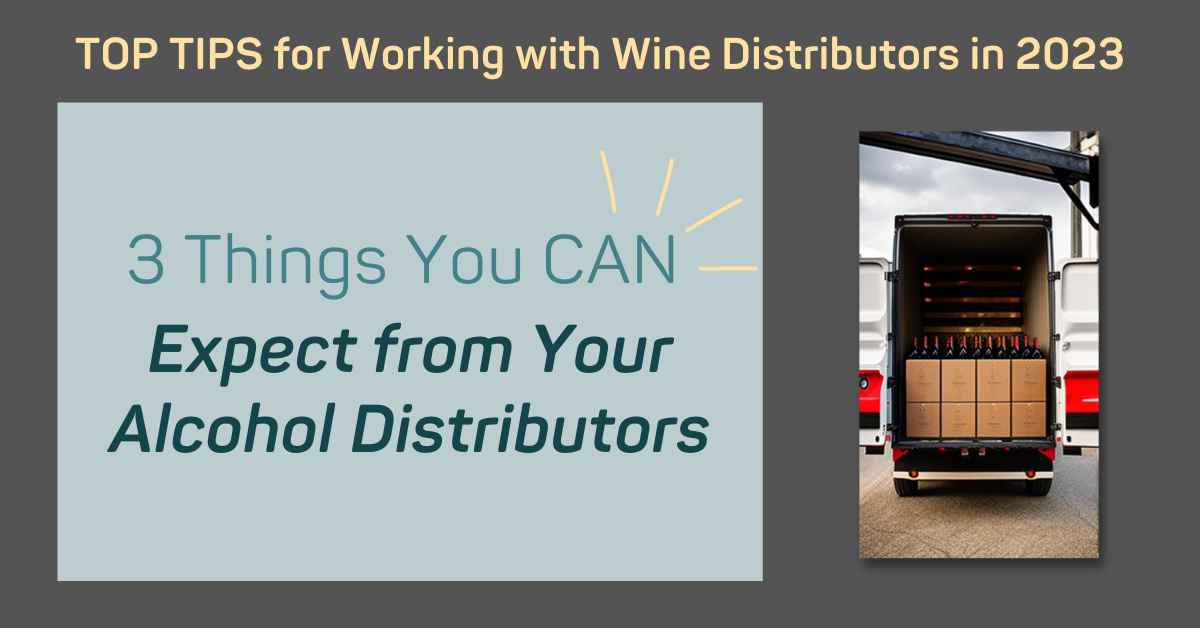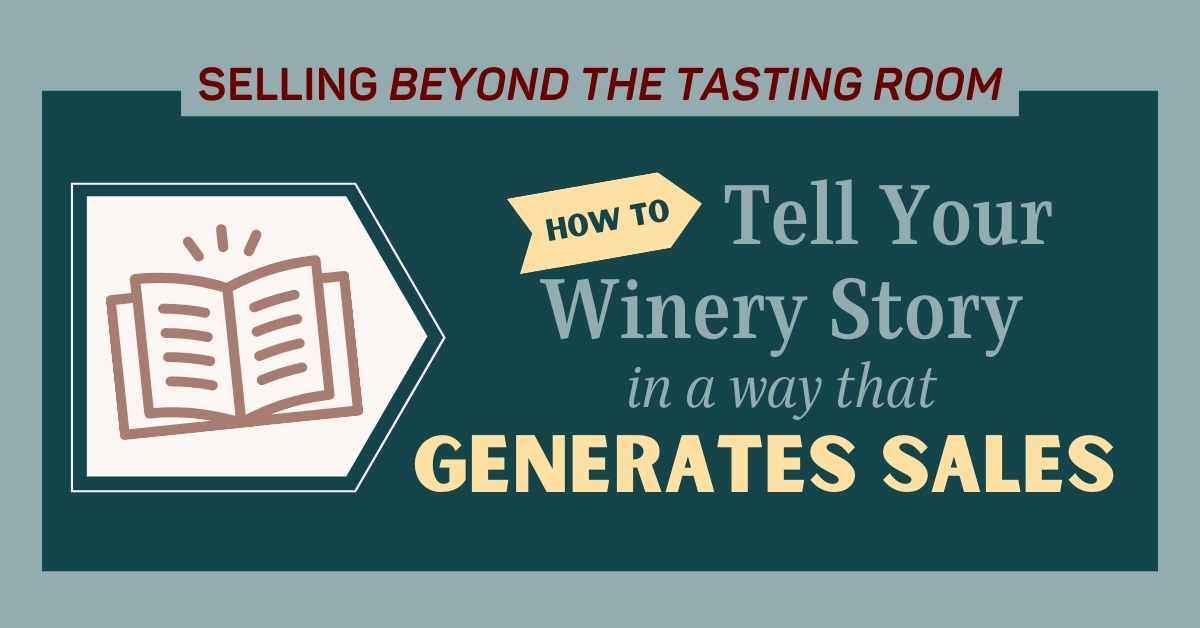6 Wine or Spirits Account Types You Should Be Targeting Now
Not all accounts are equal. Not even close. The 80/20 Rule is real and you ignore it to your peril. If you want to dramatically increase your wine...
8 min read
 Ben Salisbury
:
1/19/23 7:07 PM
Ben Salisbury
:
1/19/23 7:07 PM
This is a common question I get from winery owners and distillery owners: "I have built all this new distribution. How do I 'pull the product off the shelf'?" This is a flawed concept based on the false assumption that all accounts are CAPABLE of the same volume level. Nothing could be further from the truth!
If you gain distribution in the right accounts, to begin with (where the volume generated is already built-in), you need not worry about how to "pull the product off the shelf."
The key to selling all the wine or spirits you want to sell is getting into the right accounts, to begin with! There is a direct correlation between the amount of foot traffic an account receives and the amount of product it can sell.
It is critical that winery and distillery owners research the highest volume accounts and then narrow their selling efforts to ONLY these accounts. The last thing you want is to be one of several thousand wines or spirits available in the account.
This video is packed with lots of very practical advice you can start using immediately!
Video Transcript:
Today we're going to bust a really big myth, and this has the potential to completely transform your wine or spirit sales.
So, I get this question a lot from winery owners, distillery owners. They tell me, "I've gone out and built all this new distribution -- either my team or the distributor has built this new distribution. Now, how do I get it to pull through off the shelf? How do I get more consumers reaching for that product and pulling it off the shelf or off the wine menu?" Well, this is a flawed way of looking at the situation, and that's what this video is all about. When it comes to selling lots of wine and spirits, there are certain things that appear to be the right thing to do, but when you really investigate more deeply, you realize there is a much better way. There's some flawed concepts, some myths, if you will, about how this game is played.
One of the most common myths is that a distributor can go out and sell and build new distribution for you. They used to be able to. Those days are long gone because there's just too many brands and too few distributors. But this idea that you can create pull off the shelf, and that's the next logical step once you've got all the distribution -- this is a myth and it's a flawed concept. And let me explain. Part of why this myth is perpetuated is this is how the distributors view the world. And I'm not knocking distributors; it's just a fact. They see that if you can go out, if a winery or distillery can go out and build lots of new points of distribution, now the burden is on the winery, the burden is on the brand to create the brand awareness to pull that product off the shelf. And now, this seems really logical, doesn't it? But the problem is, it's just not a reality that you should be pursuing.
This premise, this idea, this myth that you should go get new distribution, and then spend time, money, and energy getting the product to sell through, this makes a fatal assumption. And that assumption is that all of these accounts are equal; all of these accounts are capable of the kind of volume that you need them to be capable of. And this is where the myth really starts to fall apart and what this video is all about.
Now, I know this is going to be really hard for many of you watching this video to accept because it just seems so logical. Go build distribution, and then work on getting the product to pull off the shelf. But it is a trap. It's not only a myth, it's a trap, and you must avoid it. So, let me explain. The key to selling all the wine or spirits that you want is to get into the right accounts to begin with. You must do your homework, do the research, find out where is all the volume being done. Here's a couple of practical examples.
A restaurant that's really, really busy, that serves hundreds and hundreds of customers in every meal period, whether that's lunch or dinner, they're going to sell a lot more product than a restaurant that is not very busy. There's a direct correlation between foot traffic and the amount of product that an account can sell. In the retail world, the off-premise world has a lot to do with foot traffic. How many people are shopping there? How much wine is sold off their website? Do they have a catalog? Do they have a large email list? Some of these retail wine shops sell far more wine than their competitors do, and you must learn how to identify them because that's the places you want to be in.
You don't want to just be one item on the shelf of a thousand different products. You've got to seek places where the selection is much narrower and the volume is much higher. We call this velocity sales per point of distribution. This is so key, and it's missed by most people.
So if you're still watching the video at this point, I have just given you in a tremendous gift. Because the minute you make this mental shift against trying to build distribution and then pull it off the shelf to going out and finding the right retail placements to begin with, it can completely transform your business.
Let's continue almost some more practical examples to really drive this home. You should look for a restaurant that's really, really busy. How can you do that? Well, there's a couple of indicators of volume. One is how many times has this restaurant been reviewed on Yelp? Don't look at the ratings on Yelp, because those are very subjective and quite meaningless.
But if a restaurant has thousands and thousands of reviews, just look at the total number of reviews, that is a good indicator that a lot of people eat there. You can't get 1200 reviews at your restaurant unless you're getting thousands of people eating there every week, so that's a really nice empirical number telling you that that's a busy restaurant. A couple other key indicators are lots of private dining space. Restaurants with private dining space do a tremendous amount of wine and spirit's volume, and you can research this very easily on Yelp. Another key indicator is outdoor dining. Restaurants that have massive outdoor seating, they do tons more volume than the average restaurant.
What about the off-premise side, the retail side? Well, I mentioned a little bit of this, but looking for the number of reviews, looking at their website. Is it obvious that their email list is a priority? Because most retailers use their email list to drive tremendous amount of sales both inside the store and off their website. You should look at their website to see how robust are their e-commerce sales? How extensive is the selection? Are they featuring products on the website that drive more sales to some products versus others? If you know where to look for where the volume is being done and you focus on getting placements in those accounts, it is going to have a dramatic effect on how much product you sell.
Now, let's talk briefly about some of the key metrics that are used in our industry. And the principle one is account sold, distributors love to measure how many accounts sold there are because it kind of puts everyone on a level playing field. And as I said, if you're in 40 accounts and you're not selling what you'd like to on those 40 accounts, the distributor's like, "That's not my problem. You're in the accounts. Now it's up to you to get it to pull through." And as I said, you want to avoid that trap. So, account sold is not a good measurement. What about points of distribution? Well, this could be useful too, but only if those points of distribution are aimed at the right account.
So the key here is to create a target account list of where all the volume is being done, and then narrow the focus of your sales activity to only those accounts. This is going to have a dramatic effect. Now, there are lots of other key metrics that will help you zero in on the richest targets, and I have other resources that will point you there. In fact, in the description of this video, I'll put some very useful links that go deep into identifying the right target accounts, and not just how to identify them, but how to approach them and to sell to them, which is a whole other video that you should definitely check out.
But this idea that not all accounts are equal and you got to do your homework and your research to identify the richest targets, and then narrow the focus of your selling efforts to those, it is going to transform your business. You're going to sell a lot more wine and spirits if you approach this. So, the summary here is do not worry about how to pull product off the shelf. Forget that completely. Worry about putting your product in the right accounts to begin with, where the volume is a foregone conclusion, where the volume is going to happen automatically.
And I don't think we can give you too many examples for this, so here we go with some more examples. Let's take a restaurant that has lots of private dining space, like four or five private dining rooms, so maybe the largest could see 50 or 80 people. These places in a single night can go through 40, 50, 60 cases of wine and a whole lot of spirits as well because they have so many people dining there in that private event. These restaurants that have private dining rooms, they also have a banquet wine list and a banquet cocktail list. They don't offer the same breadth of selections as you get in the main dining room. And the reason is quite simple, because it takes a lot more volume to satisfy one of these private dining events.
So if you have a chardonnay on the banquet list or a Cabernet Sauvignon on the banquet list, or you're the only bourbon or the only vodka in the little cash bar that's preceding the big banquet event, you are going to sell a whole bunch of wine just automatically because that's all built into the program of this private dining event. This is so much smarter than running around and trying to get your products into distribution in lots of accounts. I'd rather have one or two of these private dining placements that generate five, 10 cases a week than a hundred that only generate six bottles every other week.
And yet you see everybody running around trying to get more distribution. It's really kind of silly when you think about it, and I hope this video is causing you to think more deeply about it. So, a quick recap here. First, you've got to let go of this idea that the burden is on you to create brand awareness, to pull product off the shelf. That's a myth and it's a flawed concept. Instead, you should take time to study and research the accounts where all the volume is being done, and then focus on getting into those accounts because the volume's going to be automatic. This little shift could totally transform your sales.
Now, I would love to hear from you. If this has piqued your interest and you want hear more about it, just let me know. I would just go right down to the comments right now and say, "Ben, I want to more. You've got my attention. I want to hear more." Let me know in the comments because I read all those comments and I will get back to you. I will most likely send you additional resources that go deeper onto this topic.
But my goal of this video is to get you to snap out of this myth, not participate in this game any longer. And so I hope I've accomplished that today. Let me know what questions you have. I would love it if you would subscribe to this channel. If you found value in this video, please give it a thumbs up. I will speak to you all soon.

Not all accounts are equal. Not even close. The 80/20 Rule is real and you ignore it to your peril. If you want to dramatically increase your wine...

When it comes to working with alcohol distributors in 2023, one of the biggest mistakes I see winery and distillery owners make is depending too much...

If you’re reading this, you’ve probably noticed by now that selling your wines or spirits online with wine marketing isn't always easy. Nobody gets...